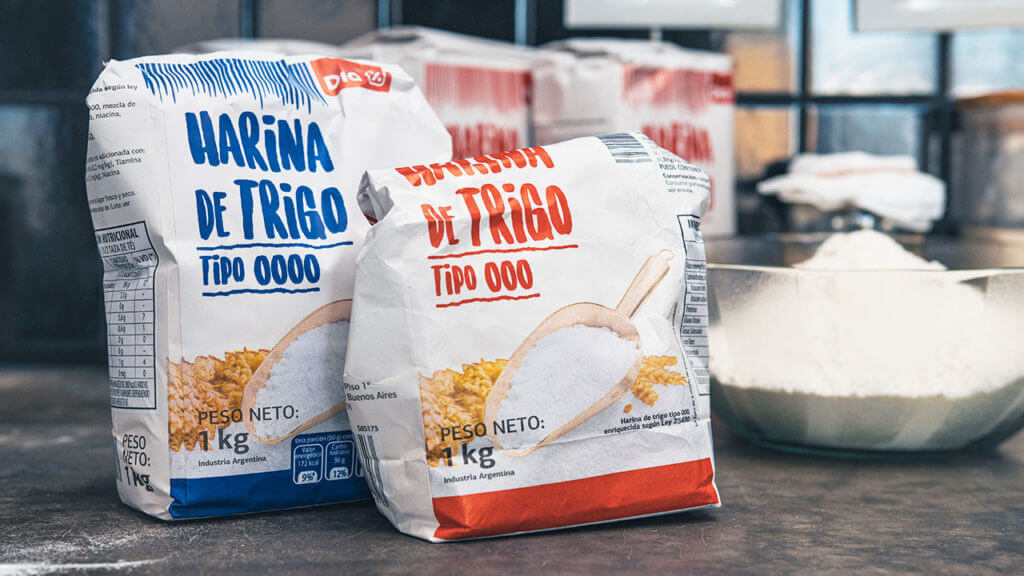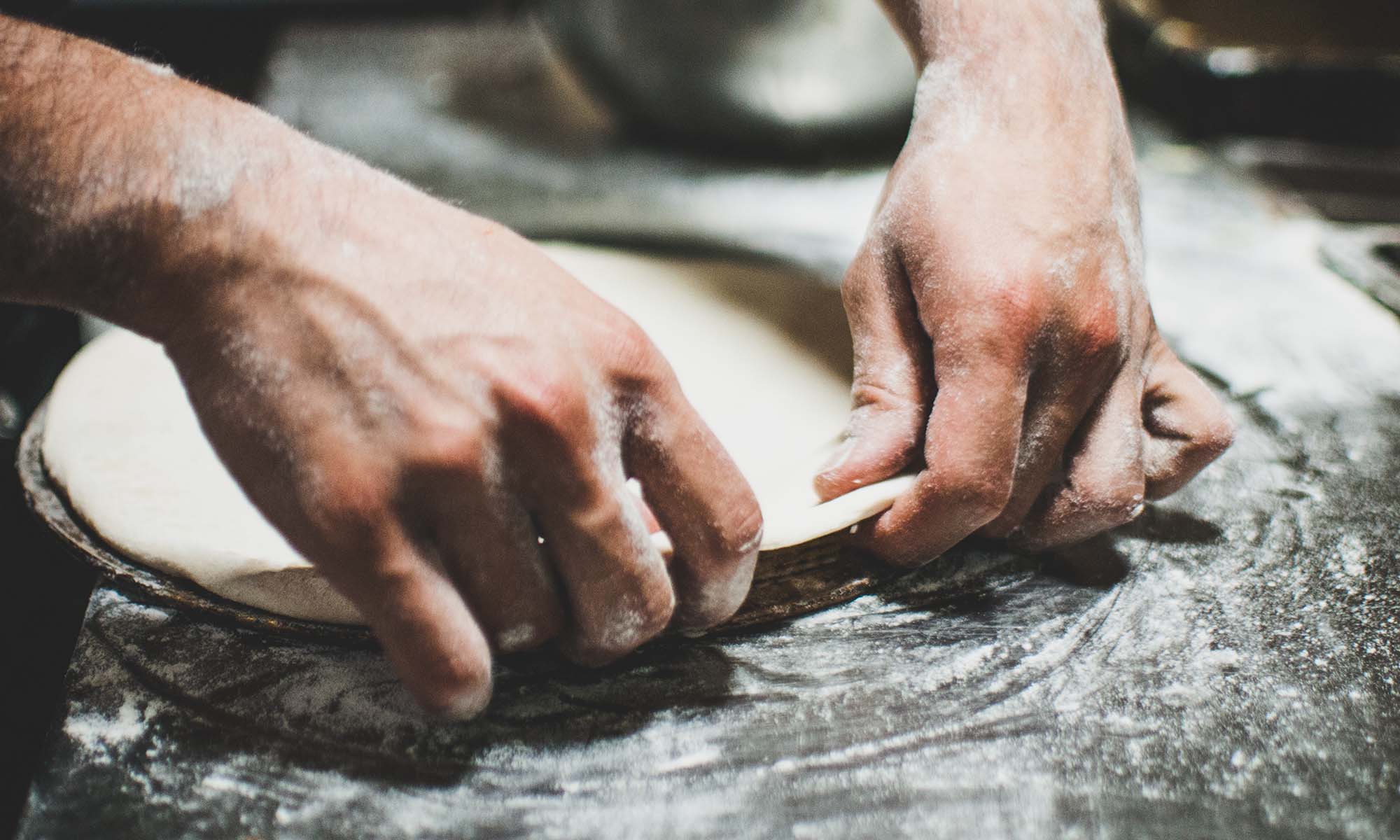So tell me, what’s really going on with this super-breed of 00 Italian flour?
What is 00 flour? Is it Italian? Is it gluten-free? Does it contain less protein than regular types of flour? Can it be used in replacement of all-purpose flour? These are all stellar questions that we’re going to take a look at in this article.
When I started in the bread world, I had misconceptions and ignorance of practically everything. Sourdough became an intriguing type of bread because it did not affect my dad’s gluten sensitivity. Our family learned bits of information about bread from various sources. However, it was scant and not well understood. Somehow, I developed the notion that double zero flour was a gluten-friendly option. I also thought that it was a superior flour type exported from Italy.
My increasingly shaky foundation of bread knowledge led me to some embarrassment. After concluding I wanted to try baking sourdough, I waltzed confidently into a French bakery in search of Italy’s famous 00 flour. The baker informed me that he had no double zero imported from Italy. He only had flour from Québec. I left discouraged and felt a little overwhelmed, not knowing where I’d possibly find what I thought I needed. It turns out I needed to learn more than I had previously calculated.
Let’s look further into flour in general, how it’s processed, and where some of the misconceptions start.
What is flour, and where does our flour come from?
In the simplest terms, double zero is a finely milled type of flour commonly used in pizza dough. It’s not intrinsically Italian.
Flour can amazingly be made from a large number of different plants. Primarily, the flour we use for bread comes from wheat – and all forms of wheat stem from the grass family. Yes, even the green grass that grows around your home is related to wheat. It’s all just grass.
It’s important to understand that every type of grass grows seeds on the end of its stock to multiply itself. These seeds mainly consist of four different elements; the first is the outer layer: the hull. Inside the hull, you will find the bran, the endosperm, and the germ.
White 00 flour is primarily made up of the endosperm. In contrast, whole wheat flour contains not only the endosperm but much of the bran, making it brown. More naturally occurring yeast can be found in the outer parts of a wheat kernel. Thus, whole wheat contributes to a healthy and active sourdough starter. Sourdough starter can be used to make many types of food; especially pizza, bread, and some incredible desserts. Making your own starter is totally doable! I’ve written a simple in-depth guide on creating your own from scratch.
How is gluten-free flour made?
Rice, coconut, rye, and buckwheat flour are processed differently than traditional wheat. Gluten is a naturally occurring protein found in wheat. There is very little (if any) found in other types of plants.
Gluten proteins in wheat are crucial to strength, durability, and stretchiness. Conversely, flour made from gluten-free plants will have little to no structure and will easily fall apart while being handled. Gluten-free flours are strenuous to work with.
When you make pizza or bread dough, it’s essential to allow the dough to hydrate without any yeast so that the gluten can form a proper structure.
Allowing bread and pizza dough to ferment with naturally occurring yeast changes the dough entirely. Yeast’s job is not just for the process of causing dough to rise. Its other job is to start a fermentation process that unlocks loads more nutrition our human bodies can process and absorb. Without this process, our body has an egregiously tough time digesting and drawing any nutritional value from the dough. Lack of dough fermentation is almost certainly why people develop gluten intolerance.
How is flour categorized in the USA vs Italy?
In most of North America, flour is categorized into various types. We have general all-purpose, whole wheat, bread, cake, and pastry flour. Without directly talking to the flour mill, it’s next to impossible to know what percentage of the hull was included with the flour. You will unlikely know what types of wheat were used to make the flour. In most cases, you will not know what grind size the flour was milled at.
In Italy, things are a little different. They use a system to label what milling size each flour was processed with. Type 2 is where things start on the coarse end. Next is type 1, then 0, and finally 00. In some parts of the world, you can find triple zero or as fine as quadruple zero milled flour.
It’s worth noting that if packages are written in Italian, they may read “doppio zero,” which directly translates as “double zero.”
What’s the purpose behind fine and ultra finely ground flour types?
Finely milled flour that excludes the outer parts of the wheat kernel, such as the bran and hull, is frequently used for making pizza dough. Pizza dough is preferred by many to be velvety smooth. It helps to form a perfectly crunchy crust on the outside with the slightest bit of chewiness on the inside. It’s the Neapolitan way. And if you ask an Italian, they might even tell you that this is the only type of pizza that matters.
Having some double zero on hand for homemade pizza is worth it. Knowing how to make good pizza dough is an invaluable skill set. And it’s much easier to learn than figuring out sourdough. However, before I began, I had this all backwards. I procrastinated learning how to make pizza dough for a long time.
My favorite pizza teacher on the internet is Vito Lacopelli. He’s from Bari, Italy, and he knows his stuff. Here’s his channel introduction video. If you have a YouTube account, I highly recommend subscribing!
Can 00 flour be used for other types of baking?
Yes, absolutely! You can use double zero in many forms of baking!

I write this article while in Buenos Aires, Argentina. In most supermarkets here, general “all-purpose flour” is not even an option. Instead, triple zero and quadruple zero flour fill the shelves. Fortunately for me, whole wheat is not too hard to find. Right now, I’m using 000 or 0000 flour in all my baking, and everything turns out fine.
Hydration levels in baked goods must be considered when using finely milled flour. I mix in water not by weight or measuring cups but to feel. Because of the warmer climate here, my dough ferments very quickly. I try and allow for a generous autolyse process to build up the dough strength so that it doesn’t deform when I go to bake.


Leave a Reply